A Boat Ride From Aswan to the Temple of Isis at Philae
In this destination trip report we visit Philae, an ancient Egyptian temple dedicated to Isis located on an island just outside the city of Aswan.
Philae visit
Having visited the ancient quarry and the Unfinished Obelisk, which turned out to be highly interesting, it was time to take in the next major ancient Egyptian sight in the city of Aswan.
Philae Temple, which was dedicated to the goddess Isis, is arguably the best known of all of Aswan’s ancient Egyptian sights and is certainly a must-visit.
As it is located on an island, Philae can only be reached by boat. A journey to the island starts at the Philae Marina located a few miles south of the city of Aswan.
If you are visiting independently, you will have to take a taxi to get here, pay for your entrance ticket at the marina and negotiate a price for the return crossing with one of the many boatmen.
Fortunately, I was on a private tour with my guide Mohammed who took care of everything, making the entire process much more fast and smooth and without any hassle whatsoever.
Within minutes after we had parked our car we were already sitting in a boat on our way to Philae.


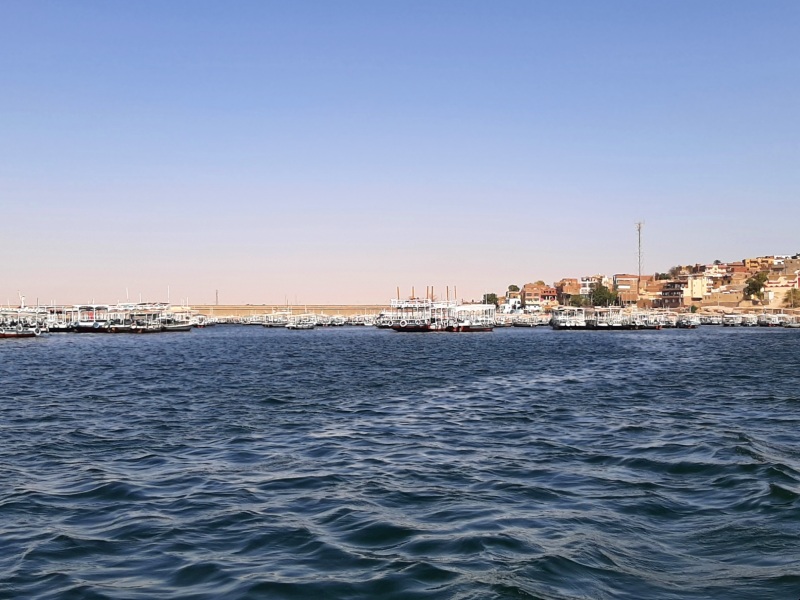
Temple relocation
Before I’ll go deeper into the ancient history of Philae, it’s worth taking a look at its modern-day history as well.
If you look at a map, you will notice that the Philae Temple is located on Agilkia Island in an artificial lake on the River Nile between the Aswan Low Dam and the Aswan High Dam.
This wasn’t the original location of Philae as the temple complex was originally located on another, lower-lying island.
After the Aswan Low Dam was completed in 1902, the Temple of Isis at Philae and other nearby archaeological sites were repeatedly hit by floods.
In the 1960s, the Egyptian Government teamed up with UNESCO to save Philae Temple and plans were made to dismantle the entire complex and to rebuild it on higher ground on a nearby island before the construction of the Aswan High Dam and the giant artificial reservoir of Lake Nasser would do even more damage.
The Philae rescue project was a success and in 1980 the entire temple complex had been built up again on Agilkia Island.

Philae arrival
Even before its relocation to Agilkia Island, Philae was famed for its beautiful approach from the water and fortunately not much has changed when it comes to this.
When you approach Philae by boat, you see the colonnades of the temple as well as the boulders and the lush palm trees on the island’s shore looming up in the distance.
Arriving at Philae is an almost dreamlike scene which makes for an unforgettable memory of your trip to Egypt.
All boats dock at the jetty on the south shore of Agilkia Island, which is a short walk away from the Temple of Isis, the main sight at Philae.
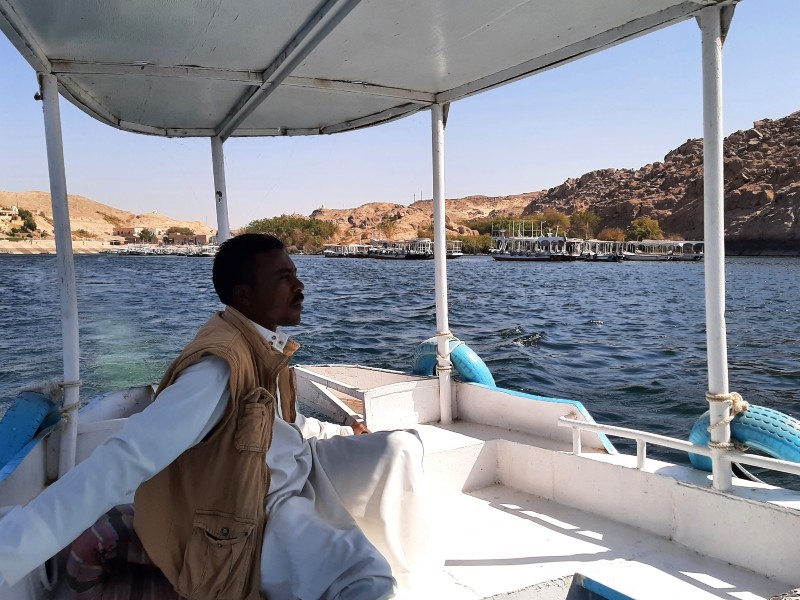

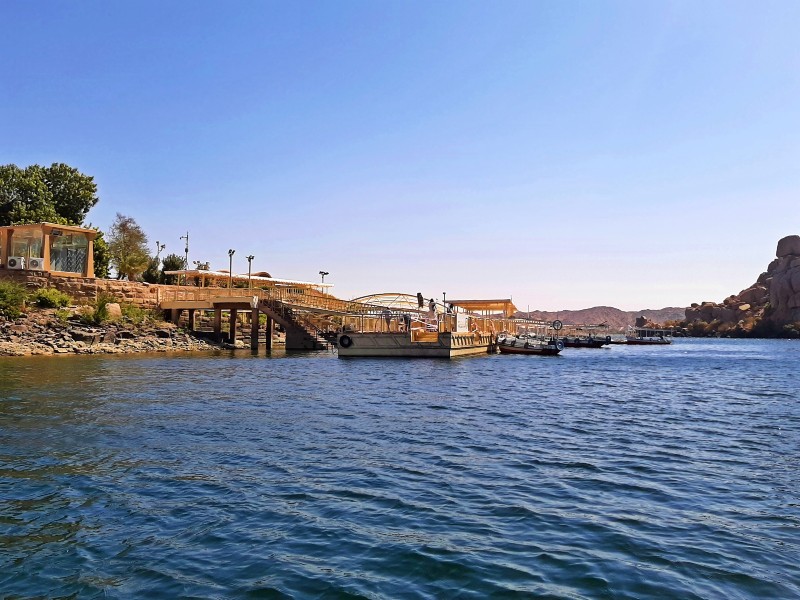
Outer court
It’s well worth exploring the Temple of Isis with an expert guide and I was happy I had Mohammed at my side during the visit to Philae.
Having a guide with you is essential if you want to understand the unique design of Egyptian temples and all the imagery you see, as behind almost everything there is some symbolism and a deeper meaning.
Whether you visit Philae or any other ancient temple during your stay in Egypt, you will repeatedly see back the same design patterns and symbolism.
From the jetty, it’s a short distance to the gorgeous colonnaded outer court of the Temple of Isis.
In ancient times, ordinary Egyptians could only make it as far as here to worship the gods as they weren’t allowed inside the main temple.
In fact, it was the job of the priesthood to perform religious services and worship the gods on behalf of the people inside the temple.
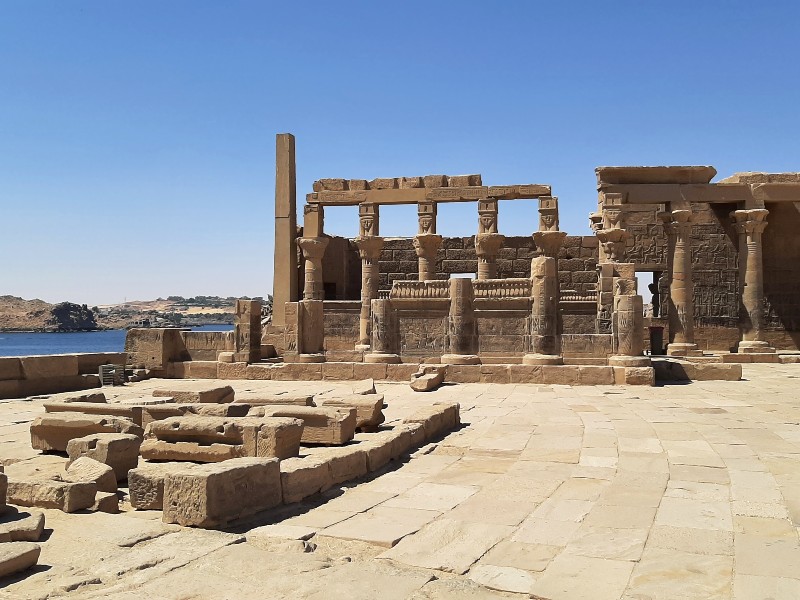

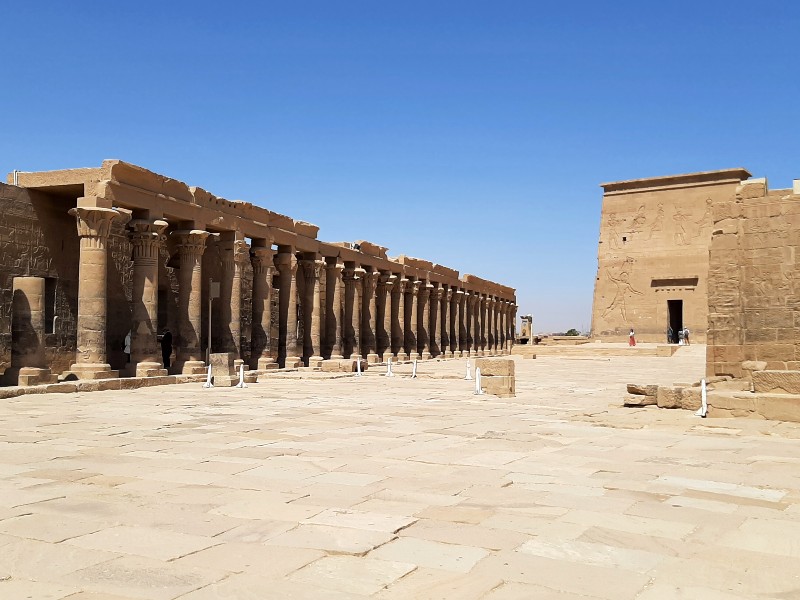

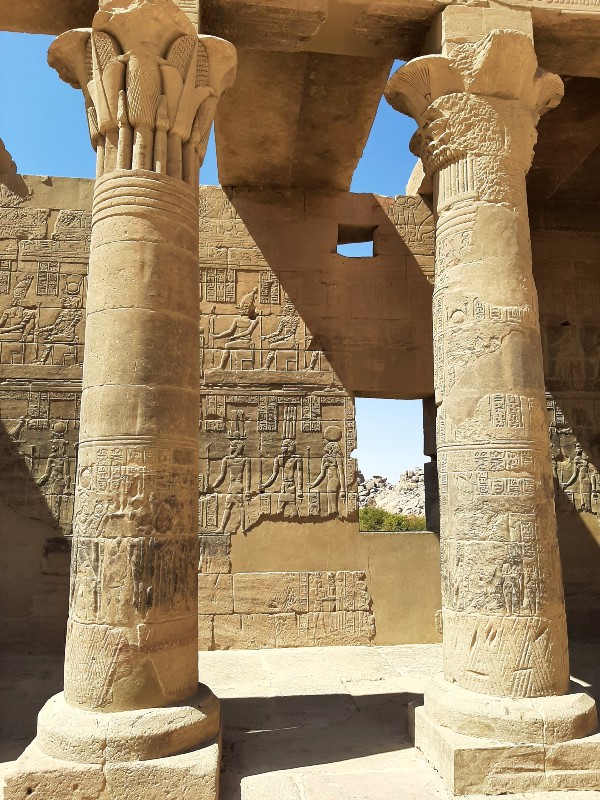
First pylon
The entrance gate of an ancient Egyptian temple is called a pylon – and most temples had several of them.
Every pylon clearly demarcated a distinct area of the temple and only select groups of people were allowed to pass through each pylon.
The first pylon of Philae Temple marks the boundary between the outer court and the forecourt. Commoners were not allowed to pass through and had to remain on the outer court.
Like almost everything else you see at Philae, the pylon was built in the Ptolemaic Era. During the Ptolemaic Era, Egypt was ruled by the Macedonian-Greek dynasty founded by Alexander the Great’s general and companion Ptolemy I Soter in 305 BC.
This dynasty lasted until the year 30 BC when Cleopatra VII and her husband Mark Anthony were defeated by Octavian, which started an era of Roman domination over Egypt.
The Hellenistic Ptolemies took over a lot of ancient Egyptian cultural and religious traits in order to win over the local population and you can perfectly see this by looking at some of the symbolic images on the first pylon.
On the left tower of the first pylon you can for example see a relief sculpture of Pharaoh Ptolemy XII raising his club and smiting his enemies, which symbolises sheer power and conquest.
However, the Ptolemies understood that you cannot control a society by force and that you must show respect to local customs and gods as well.
You can therefore see the images of the deities Isis, Horus and Hathor right above the head of Ptolemy XII as they watch how the Pharaoh is smiting his enemies, which is of course symbolism that the gods are protecting and supporting him.
Holding a stick and smiting your enemies is also an uniquely Egyptian image which has been used by Pharaohs for centuries, so the message which Ptolemy wanted to convene to his subjects was quite clear.
On the upper part of the towers of the first pylon you can see Ptolemy XII presenting the crown of Lower and Upper Egypt to the falcon god Horus and the goddess Nephthys. It also shows Ptolemy making an offering to Isis and Horus.
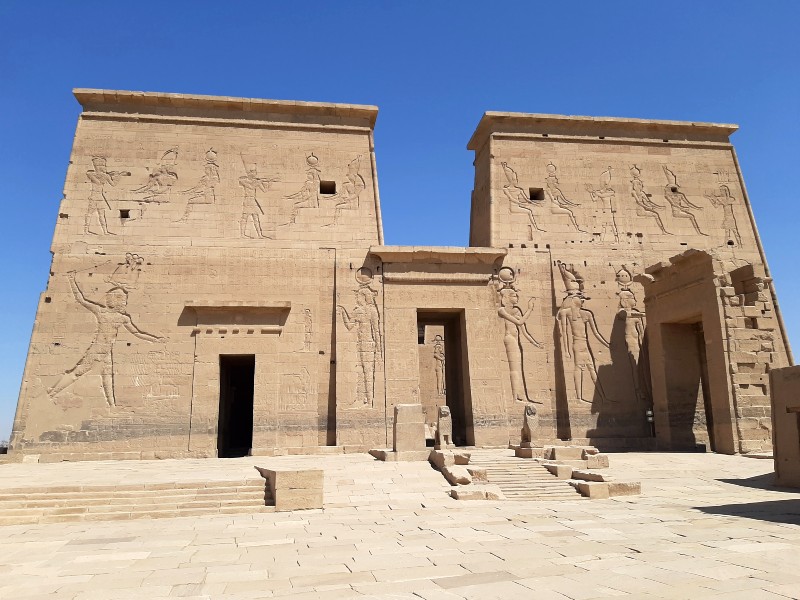

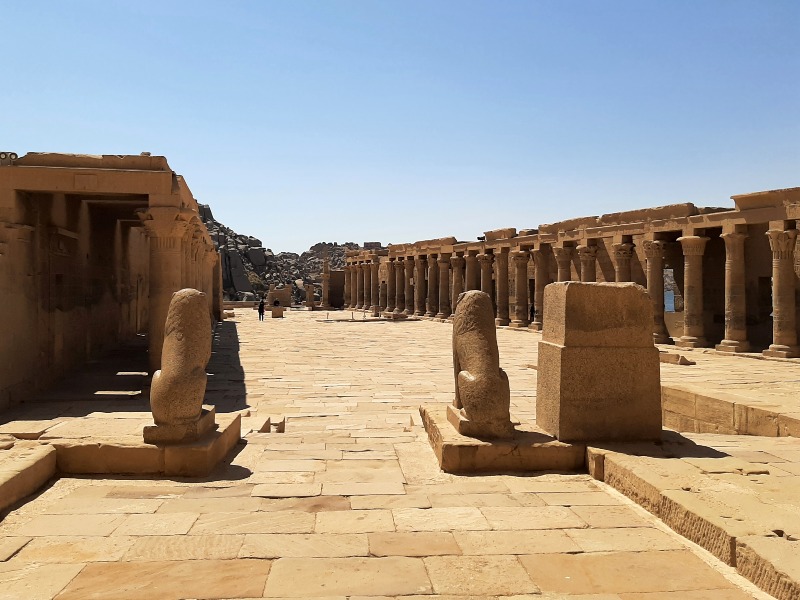
Through the first pylon
Having entered through the first pylon you will find yourself standing in the inner court (also called forecourt) of Philae, which is located right in front of the Temple of Isis itself.
The inner court was the dedicated places for the Egyptian nobility to worship the gods.
At this point, it is well-worth it to turn around and look at the backside of the first pylon.
On one tower you can see Ptolemy XII standing before Isis and Osiris, while on the other tower Ptolemy is standing before Mut and Amun.
On the left side of the inner court you see the mammisi (birth house), an important feature of temples built in the Ptolemaic Era.
In the birth house, Isis and Osiris and their child Horus were celebrated.
This cult of the divine birth of Horus was strongly associated with the divinity of the Pharaoh and was seen as a justification of the Pharaoh’s divine rule over Egypt.

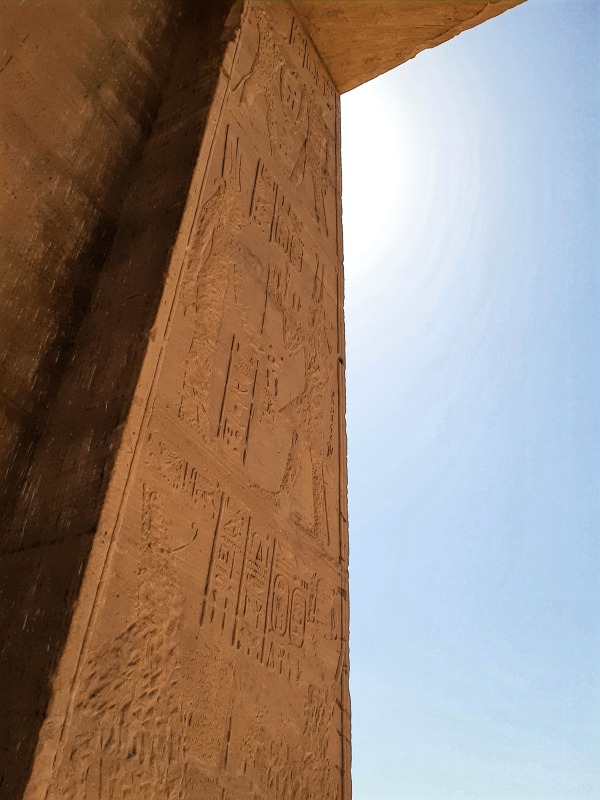

Second pylon and the inner temple
You enter the inner parts of the Temple of Isis by going through the second pylon of Philae, something which not many people were allowed to do in ancient Egyptian times.
After passing through the second pylon of Philae you first enter the column hall of the Temple of Isis, which is also known as the column court or hypostyle hall. This was the place where minor priests worshipped the gods.
This impressive court contains ten columns (five on each side) and has a few interesting features.
You can for example see some ancient graffiti as some of the old reliefs have been smashed and replaced by Christian crosses.
Around 500 to 600 AD the Temple of Isis was used as a church by Coptic Christians and you can still find several more inscriptions from this era.

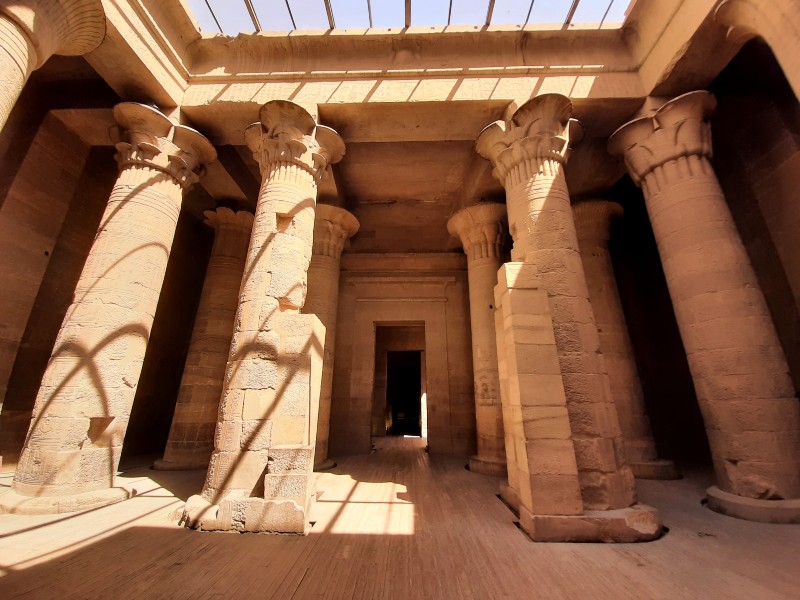

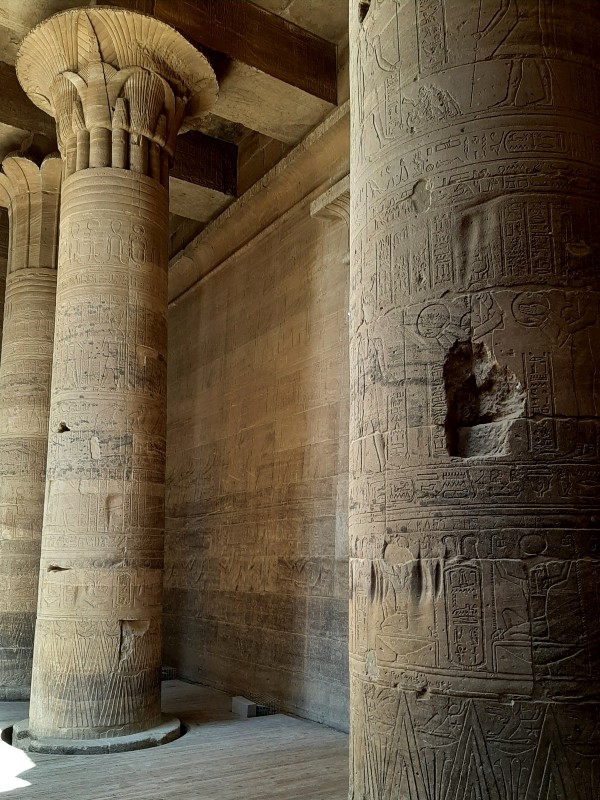


Sanctuary
The heart of an Egyptian temple was the sanctuary, where you would find statues of the worshipped gods.
The sanctuary was the exclusive domain of the High Priest of the temple and the Pharaoh and no-one else was allowed to go here.
In ancient times, the Pharaoh basically tasked the High Priest to worship a certain god on behalf of all Egyptian people, which he did in the sanctuary.
On a pedestal inside the sanctuary, which was placed here by Pharaoh Ptolemy III Euergetes, a statue of a Isis inside her sacred barque used to stand.
To perform the daily rites, the High Priest had access to storage rooms where all the necessary offerings and needed goods such as oils, milk and candles were kept.
There are some wonderful reliefs carved into the walls of the storage rooms and sanctuary as you can see from some of the pictures below.
One of these reliefs show Ptolemy in his role as divine Pharaoh offering bread and wheat to the gods, while many others depict Isis.
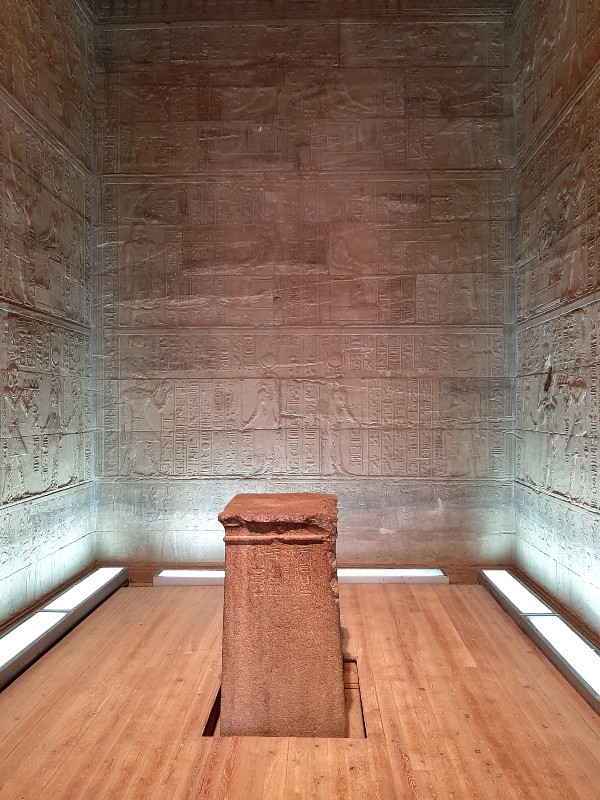
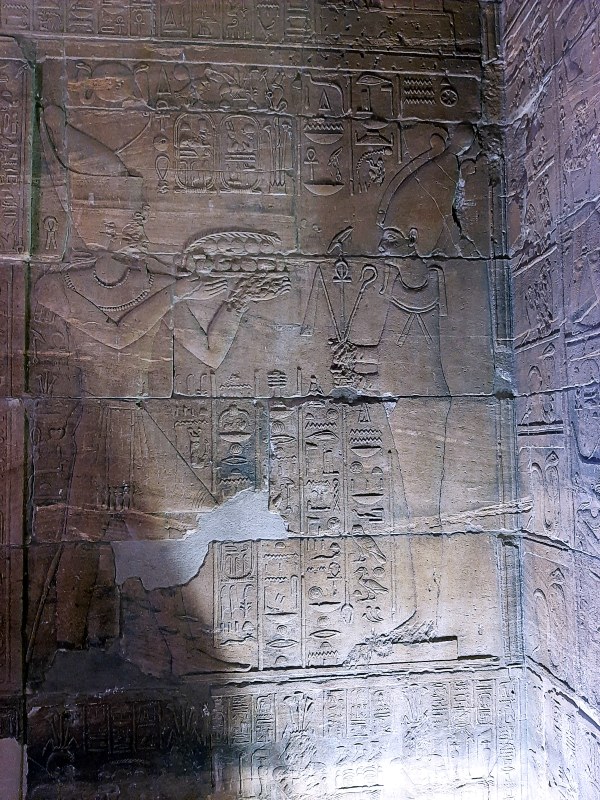
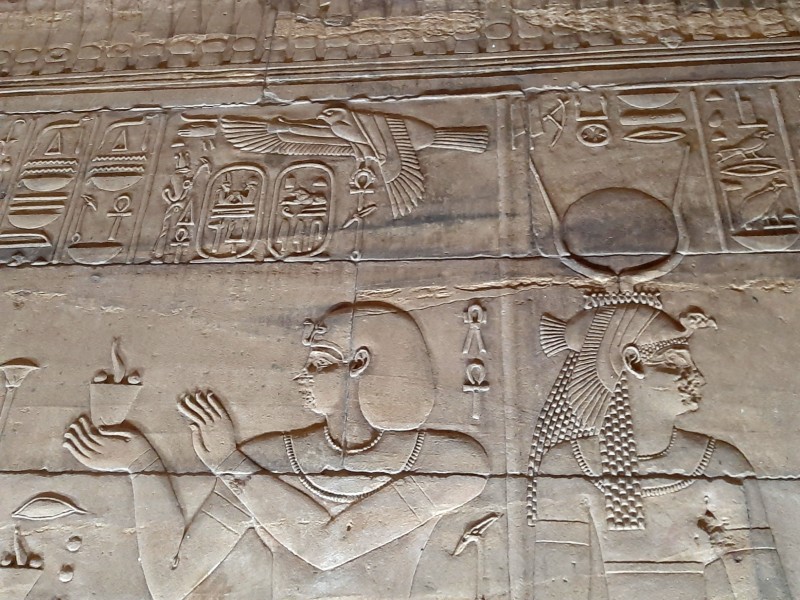
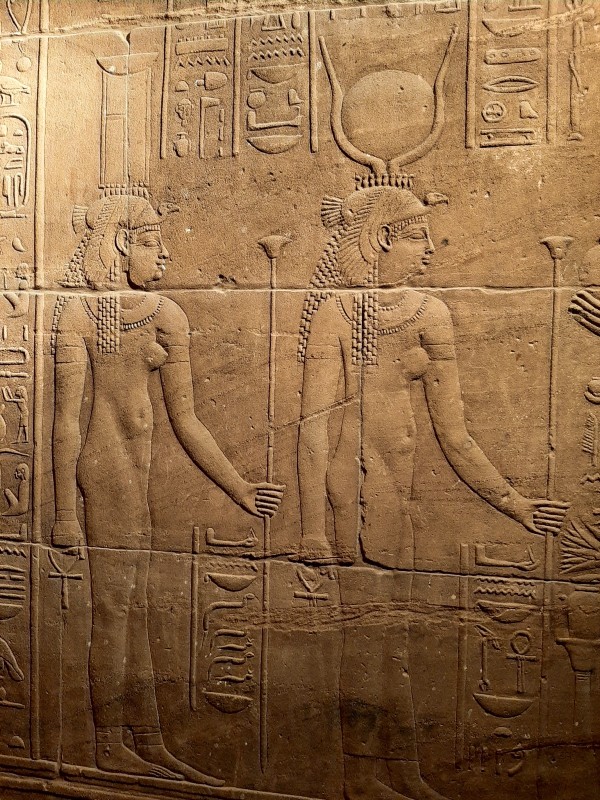


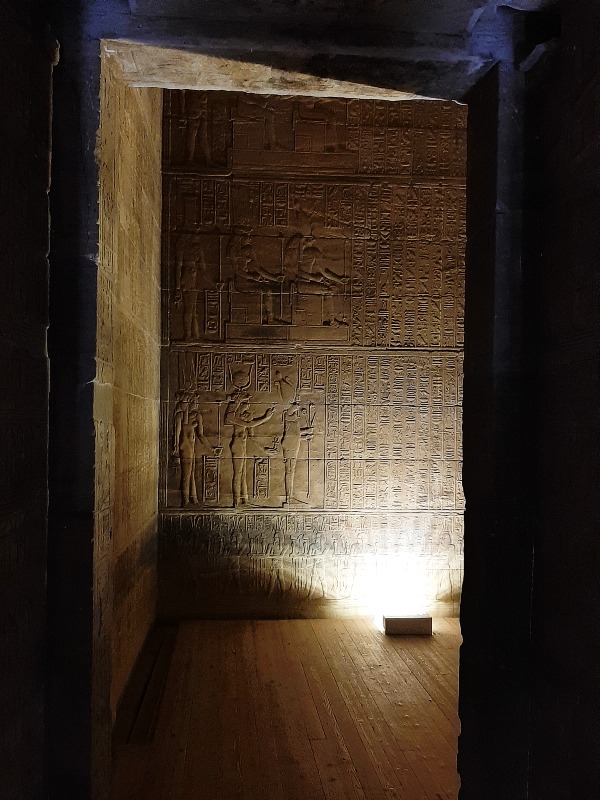
Cult of Isis
To fully understand the meaning behind the reliefs and sculptures at Philae, you have to know the life story of Isis.
Isis was in love with her brother Osiris, much to the dislike of their jealous brother Seth who had an eye on Isis himself. Seth managed to capture and kill Osiris, dismembering his body and spreading his limbs all over Egypt.
Although Isis was devastated, she did not sit still as she went on a true odyssey to collect all of Osiris’ body parts.
Despite Seth trying to stop her, Isis succeeded in her quest.
The other gods were so impressed with this that they gave Osiris the power to revive Osiris.
For the ancient Egyptians, Isis was the embodiment of maternal love, protector of woman and bringer of magic.
Although Isis was initially a figure of secondary importance to her consort Osiris and their son Horus, she gained a lot more prominence in later ancient Egyptian times, even transforming into one of the most important of all deities.

Other sights at Philae
Outside of the Temple of Isis, there are a couple of other noteworthy sights at Philae.
Before you however set off to explore the rest of the island, it’s well-worth to take one of the side exits from the Temple of Isis and to admire this gorgeous ancient Egyptian structure from different directions.
On the western side just outside of the Temple of Isis, you can find one of the couple of remaining ancient Nilometers which were used to measure the water level of the River Nile in ancient Egypt.
The higher the floodwaters were, the higher the crop output on the farms, which meant that the people of Egypt also had to pay more in taxes.
Perhaps the most striking buildings at Philae apart from the Temple of Isis are the Temple of Hathor and the Roman-era Trajan’s Kiosk, which can both be found on the eastern shore of the island.
This palm-fringed shoreline makes for a highly scenic place to sit down for a while and to admire the gorgeous views over the Nile.


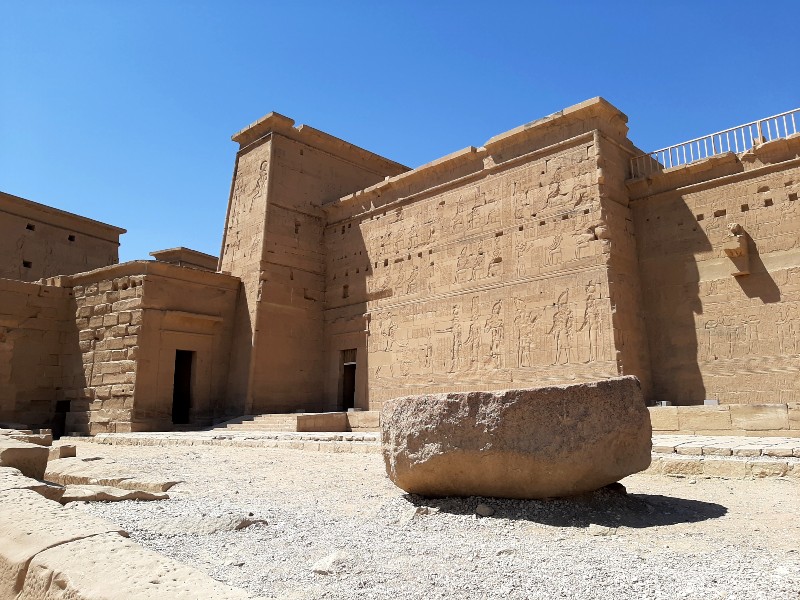

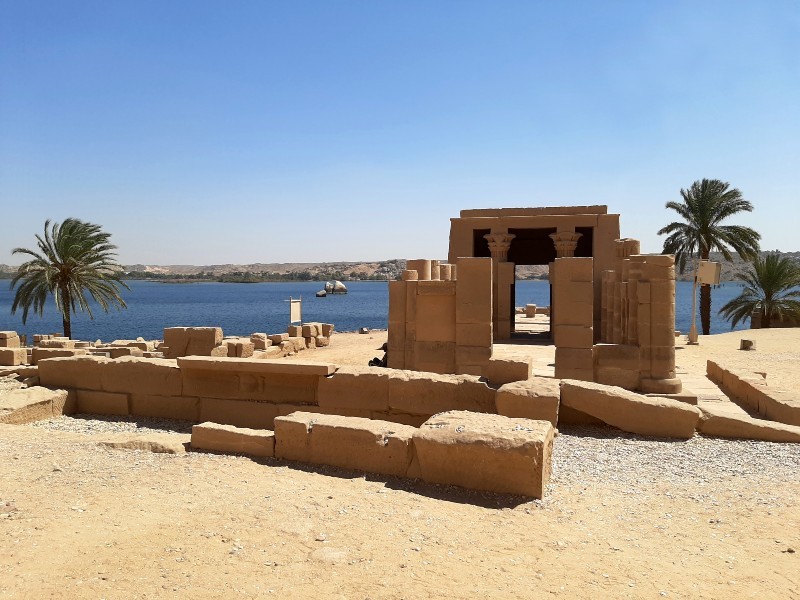
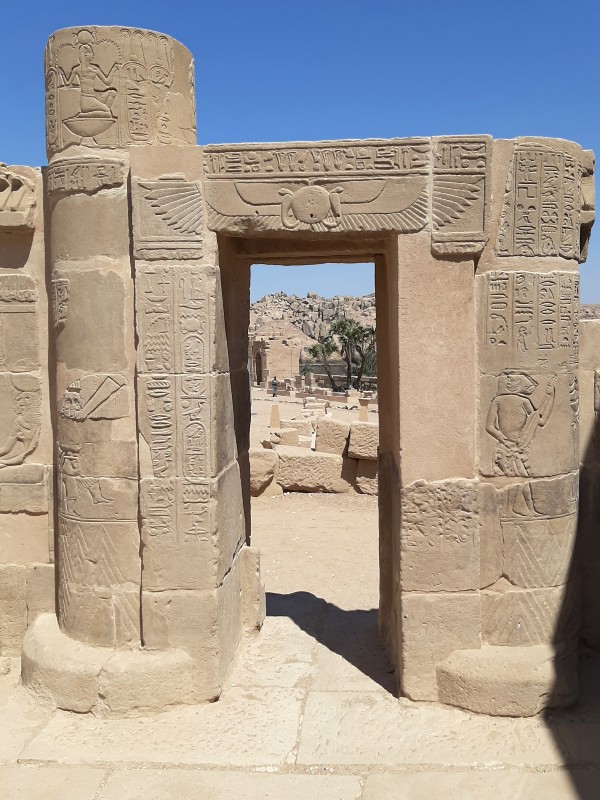
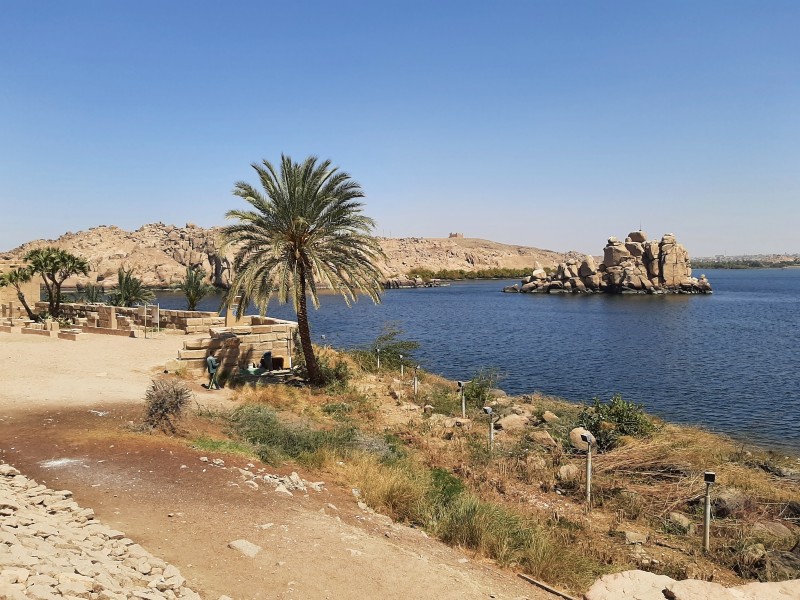
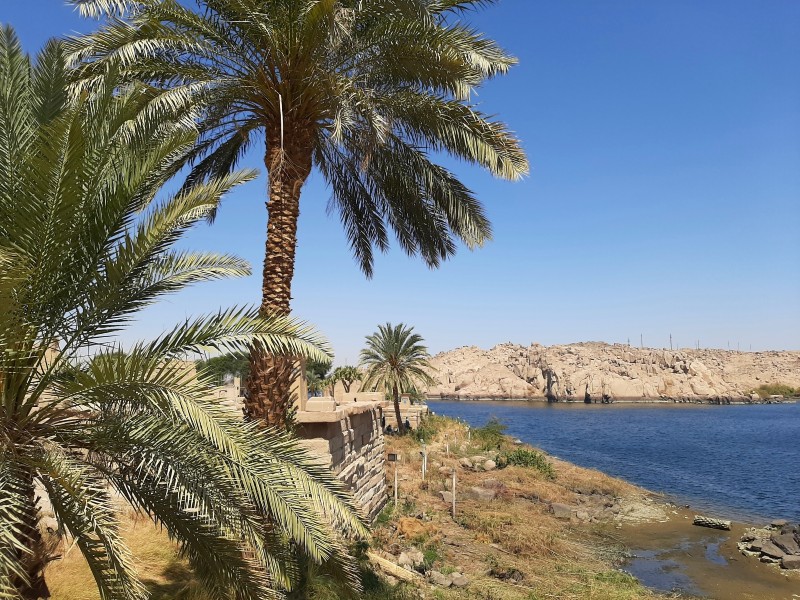

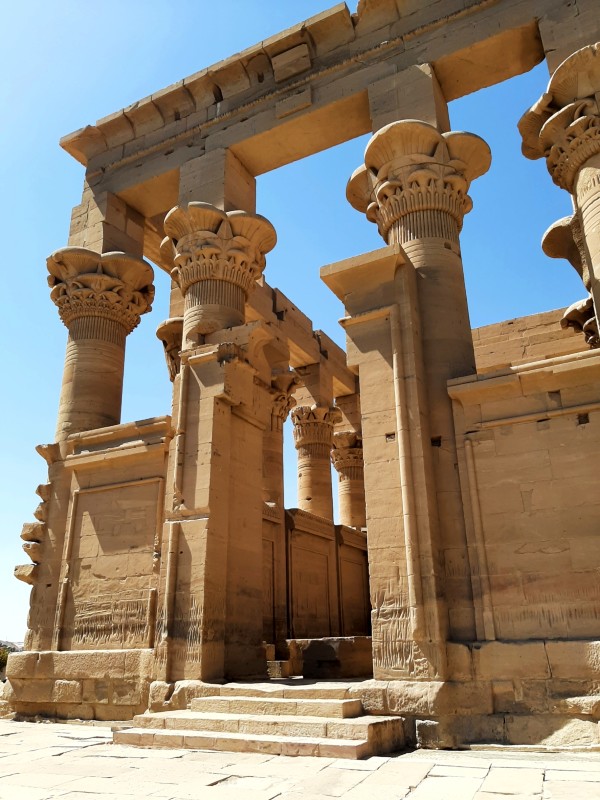
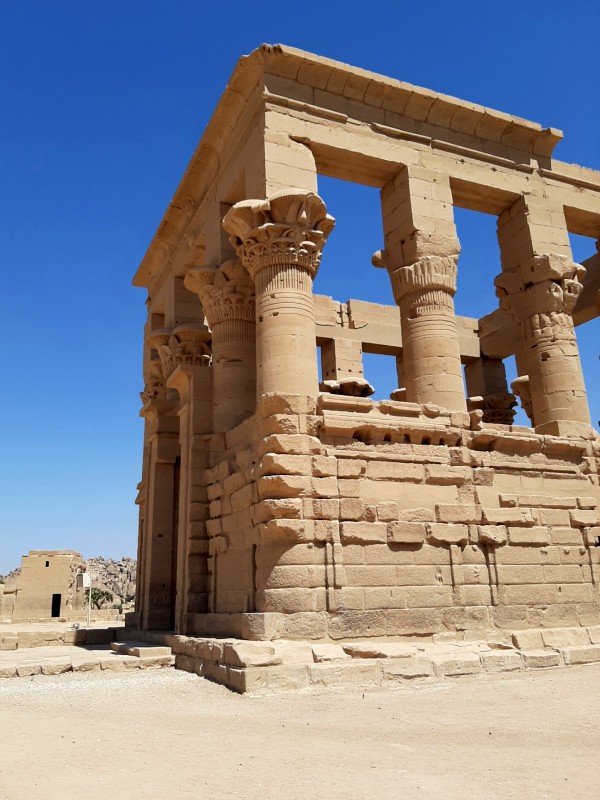
Back to Aswan
After one last peak at the Temple of Isis it was time to leave Philae and head back to Aswan.
At the jetty, we entered the same boat by which we came and set off back to the mainland.
This time, we set course along the eastern shore of Agilkia Island, from where you have some wonderful views of Trajan’s Kiosk.
What a spectacular end to a wonderful visit to Philae!


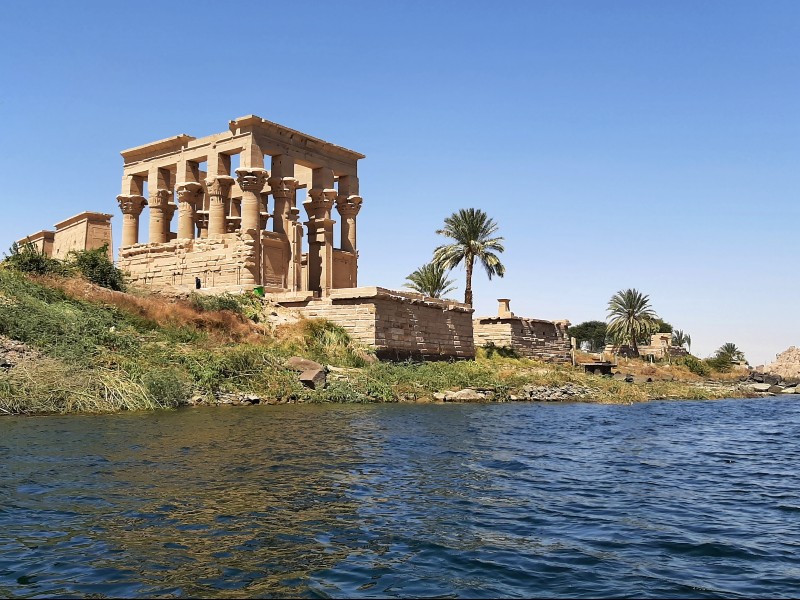


Conclusion
I absolutely loved my visit to Philae and the Temple of Isis, which is not only a highly interesting but also aesthetically one of the most beautiful of all Egyptian temples.
A big part of this is thanks to the scenic setting of Philae on an island in the Nile and arriving by boat only adds to the excitement and anticipation.
To do Philae and the Temple of Isis justice you however need a good guide who can tell you more about the ancient rituals and the deeper meaning of all the imagery and symbols.
Given that ancient Egypt was such a fabulously complicated and advanced society, there is always a reason why something was built in a specific way and why certain images were used.
It was enormously exciting and enjoyable to learn more about this.
Acknowledgements
This article was written with the help and support of my Aswan guide, Mohammed Badawy.
If you need a professional guide in Aswan, I can highly recommend Mohammed, who is not only extremely courteous and hospitable, but also a great source of knowledge about everything related to ancient Egypt, having studied archaeology at university.
Mohammed can be contacted by e-mail (mohammed_badawy95 *at* yahoo.com) or by phone or Whatsapp on the number +201005448691).
Trip report index
This article is part of the ‘Walk Like an Egyptian: A Grand Tour of Egypt‘ trip report, which consists of the following chapters:
1. Red-Eye Ramblings of a Late Night Flight to Cairo
2. A Visit to the Pyramids of Giza by Camel
3. Review: Sofitel Nile El Gezirah, Zamalek, Cairo
4. Exploring the Medieval Old Town and Islamic History of Cairo
5. Visiting the Museum of Egyptian Antiquities in Cairo
6. Mar Girgis: The Churches of Christian Old Cairo
7. Review: Ernst Watania Sleeping Train Cairo to Aswan
8. The Ancient Quarry of Aswan and the Unfinished Obelisk
9. A Boat Ride From Aswan to the Temple of Isis at Philae (current chapter)
10. A Visit to the Aswan High Dam and Lake Nasser
11. A Visit to the Nubian Village on Aswan’s Elephantine Island
12. Aswan Guide: A Visit to Egypt’s Most Stunningly Located City
13. A Half Day Trip From Aswan to Amazing Abu Simbel
14. Nile River Cruise Guide: All Info for Your Egypt Boat Trip
15. Review: M/S Princess Sarah Nile River Cruise Ship
16. Nile Cruise: Sailing From Aswan to Kom Ombo
17. A Visit to the Ancient Crocodile Temple of Kom Ombo
18. A Visit to the Temple of Horus at Edfu
19. Nile Cruise: Sailing From Edfu to Luxor
20. Luxor, Egypt: Visiting the Sights of Ancient Thebes
21. A Visit to Luxor’s Giant Temple Complex of Karnak
22. Visitor Guide to Wonderful Luxor Temple
23. Valley of the Kings: A Visit to Luxor’s Ancient Necropolis
24. The Temple of Hatshepsut: A Visit to a Unique Mortuary Temple
25. Review: Sofitel Winter Palace Hotel, Luxor, Egypt
26. Review: Daytime Train Luxor to Cairo, Egypt
27. Review: Steigenberger Hotel El Tahrir, Cairo
28. A Visit to the Pyramid of Djoser and the Saqqara Necropolis
29. A Visit to the Dahshur Pyramid Complex
30. Memphis: Exploring the Old Capital of Ancient Egypt
31. From Cairo to Alexandria by Train: My Travel Experience
32. Review: Paradise Inn Le Metropole Hotel, Alexandria, Egypt
33. Alexandria: A Visit to Egypt’s Historic Mediterranean Port City
34. Egypt: Impressions and Reflections After My Two Week Trip
35. Epilogue: Safety and How to Deal With Street Hassle in Egypt

